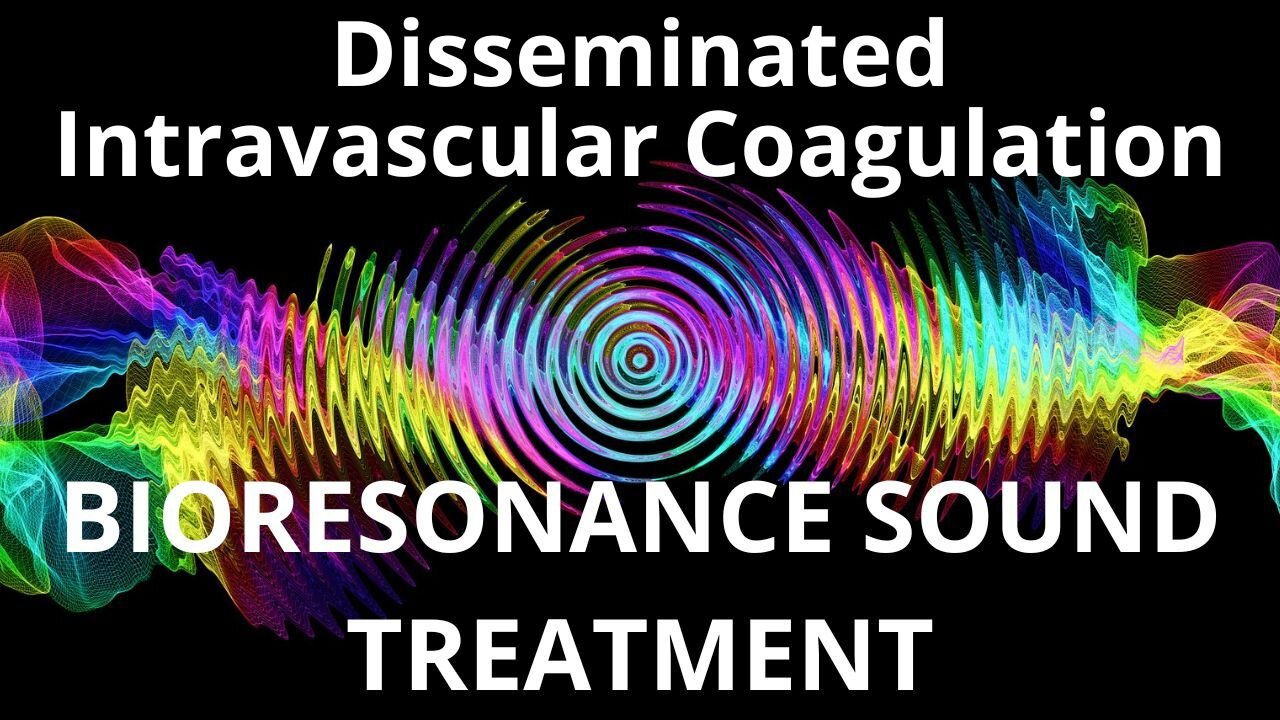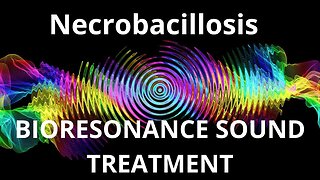Premium Only Content

Disseminated Intravascular Coagulation_Sound therapy session_Sounds of nature
Disseminated Intravascular Coagulation (DIC) is a medical condition that occurs when the body's blood clotting mechanism becomes overactive, causing the formation of multiple small clots throughout the blood vessels. This can lead to organ damage and failure, and in severe cases, it can be life-threatening. While conventional treatments for DIC exist, there is growing interest in alternative therapies such as bioresonance sound therapy. In this article, we will explore the potential benefits of bioresonance sound therapy for DIC and how it can be used as a complementary treatment to conventional care.
Bioresonance sound therapy is a form of alternative medicine that uses sound frequencies to stimulate the body's natural healing processes. It is based on the principle that every cell in the body has a specific frequency or vibration, and when these frequencies become disrupted, it can lead to illness and disease. By using specific frequencies that are believed to correspond to different parts of the body, bioresonance sound therapy aims to restore balance and promote healing.
How Can Bioresonance Sound Therapy Help with DIC?
There is some evidence to suggest that bioresonance sound therapy may be helpful in managing DIC. A study published in the Journal of Clinical and Diagnostic Research in 2016 found that bioresonance therapy was effective in improving blood clotting parameters in patients with DIC. The study also found that the therapy was safe and had no adverse effects on the health of the participants.
Another study published in the Journal of Thrombosis and Haemostasis in 2014 examined the effects of bioresonance therapy on blood clotting in patients with deep vein thrombosis. The study found that the therapy was effective in reducing clotting activity and improving blood flow in the affected area.
While these studies are promising, it is important to note that bioresonance sound therapy should not be used as a substitute for conventional medical care. It should be used as a complementary therapy to help manage symptoms and improve overall health.
Bioresonance sound therapy is a promising complementary therapy for managing DIC. While more research is needed to fully understand the potential benefits of this therapy, early studies suggest that it may be effective in improving blood clotting parameters and reducing clotting activity.
TO ACHIEVE A POSITIVE RESULT, DAILY LISTENING TO VIDEOS IS REQUIRED.
I wish you health and prosperity!
You can purchase unique medicines in my store:
https://store11998180.company.site/
You have the opportunity to support the channel:
https://destream.net/live/RadSiarAl/donate
-
 29:59
29:59
BIORESONANCE SOUND THERAPY
4 days agoNecrobacillosis _ Sound therapy session _ Sounds of nature
61 -
 2:02:49
2:02:49
Inverted World Live
5 hours agoAnnunciation Catholic School Shooting and Spiritual Warfare w/ AK Kamara | Ep. 99
96.3K16 -
 LIVE
LIVE
Drew Hernandez
10 hours agoLGBTQ TERRORIST EXECUTES CATHOLIC KIDS IN MINNEAPOLIS
769 watching -
 2:17:08
2:17:08
FreshandFit
5 hours ago10 Top Red Pills About American Women
37K16 -
 2:10:26
2:10:26
Badlands Media
11 hours agoDevolution Power Hour Ep. 383
49.2K9 -
 3:17:28
3:17:28
TimcastIRL
5 hours agoTrans Shooter Targets Catholic Kids In Mass Shooting, Leftists Reject Prayers | Timcast IRL
210K55 -
 1:31:29
1:31:29
Brandon Gentile
1 day ago25 Year Wall Street INSIDER: $1M Bitcoin Soon Is Just The START
12K -
 LIVE
LIVE
SpartakusLIVE
7 hours ago#1 Birthday Boy Celebrates with MASSIVE and HUGE 4.8-Hour Stream
323 watching -
 55:54
55:54
Man in America
8 hours agoFrom Oil Barons to Pill Pushers: The Rockefeller War on Health w/ Jeff Adam
36.3K3 -
 3:02:18
3:02:18
Barry Cunningham
5 hours agoBREAKING NEWS: PRESIDENT TRUMP THIS INSANITY MUST END NOW!
82.9K156